Previous Day - Next Day

“No one is useless in this world who lightens the burden of it for anyone else.”
~ Charles Dickens
Wikiquote (Charles Dickens (February 7, 1812 – June 9, 1870) was the foremost English novelist of the Victorian era, as well as a vigorous social campaigner.)
(Charles Dickens in Our Mutual Friend)

October 8th, 314
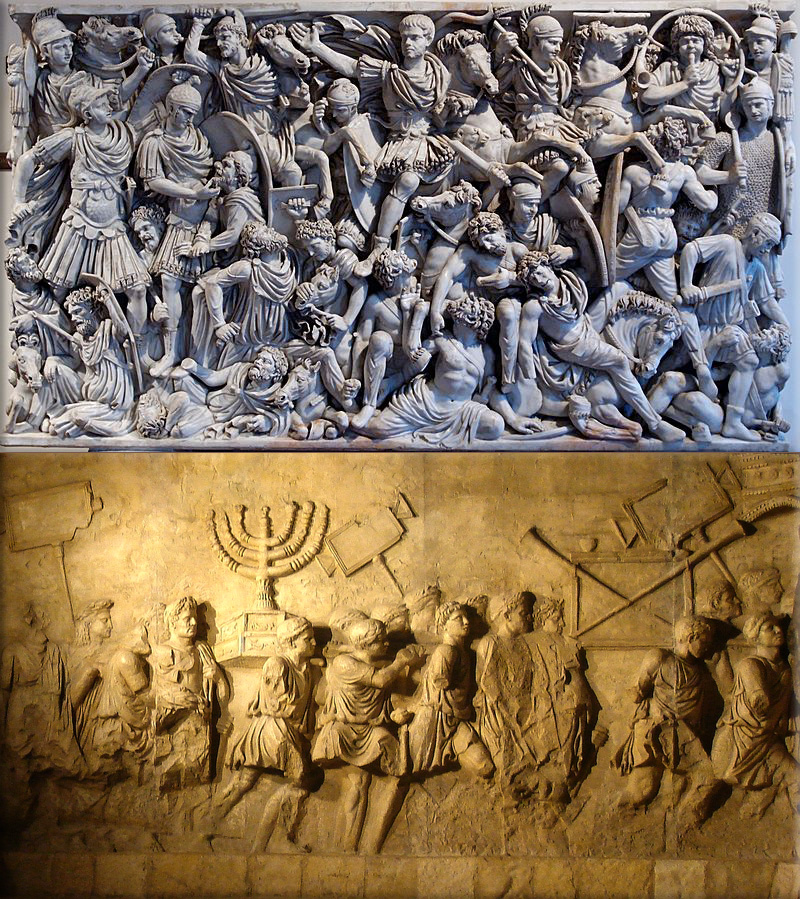
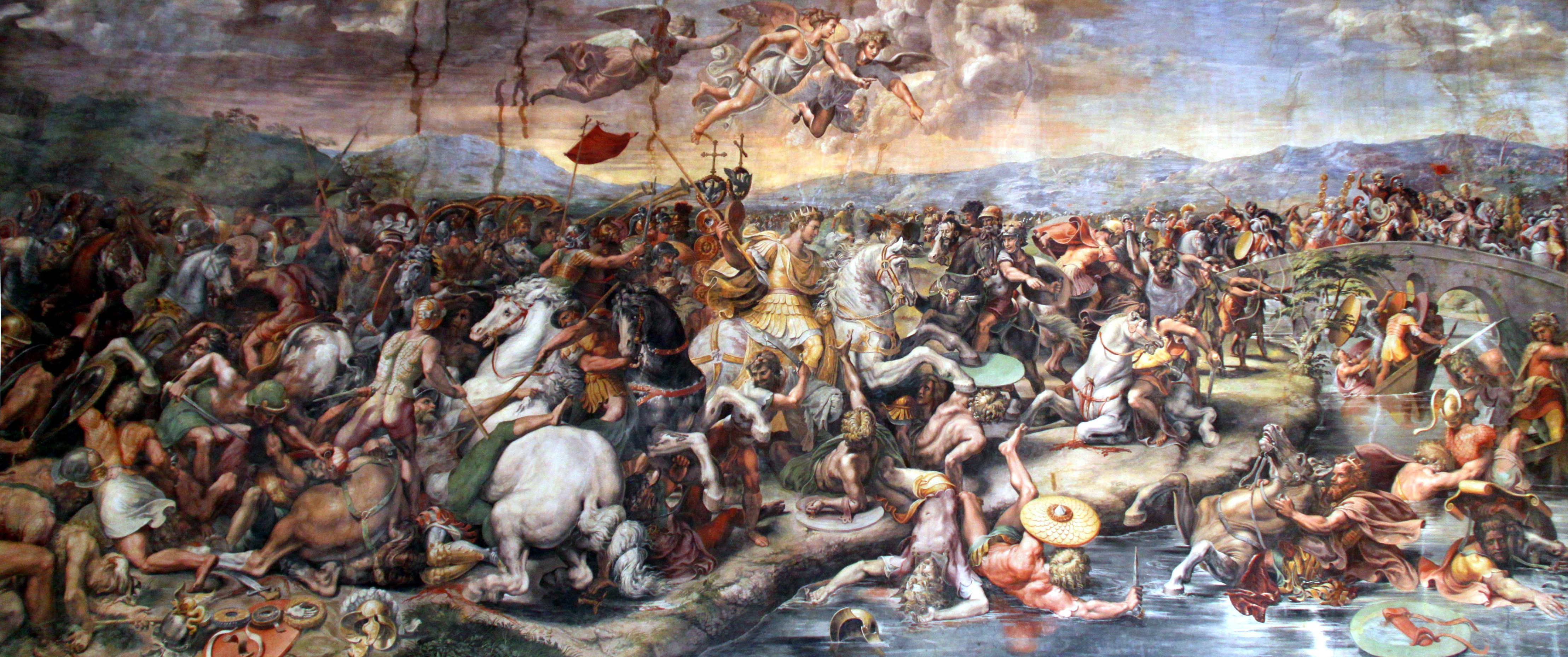
Roman Empire:
314 - Battle of Cibalae: Roman Emperor Licinius is defeated by his colleague Constantine I, and loses his European territories.
Wikipedia Image: Relief from a 3rd-century sarcophagus depicting a battle between Romans and Germanic warriors; the central figure is perhaps the emperor Hostilian / Depiction of the Menorah on the Arch of Titus in Rome.
The Battle of the Milvian Bridge (1520–24) by Giulio Romano.
October 8th, 451
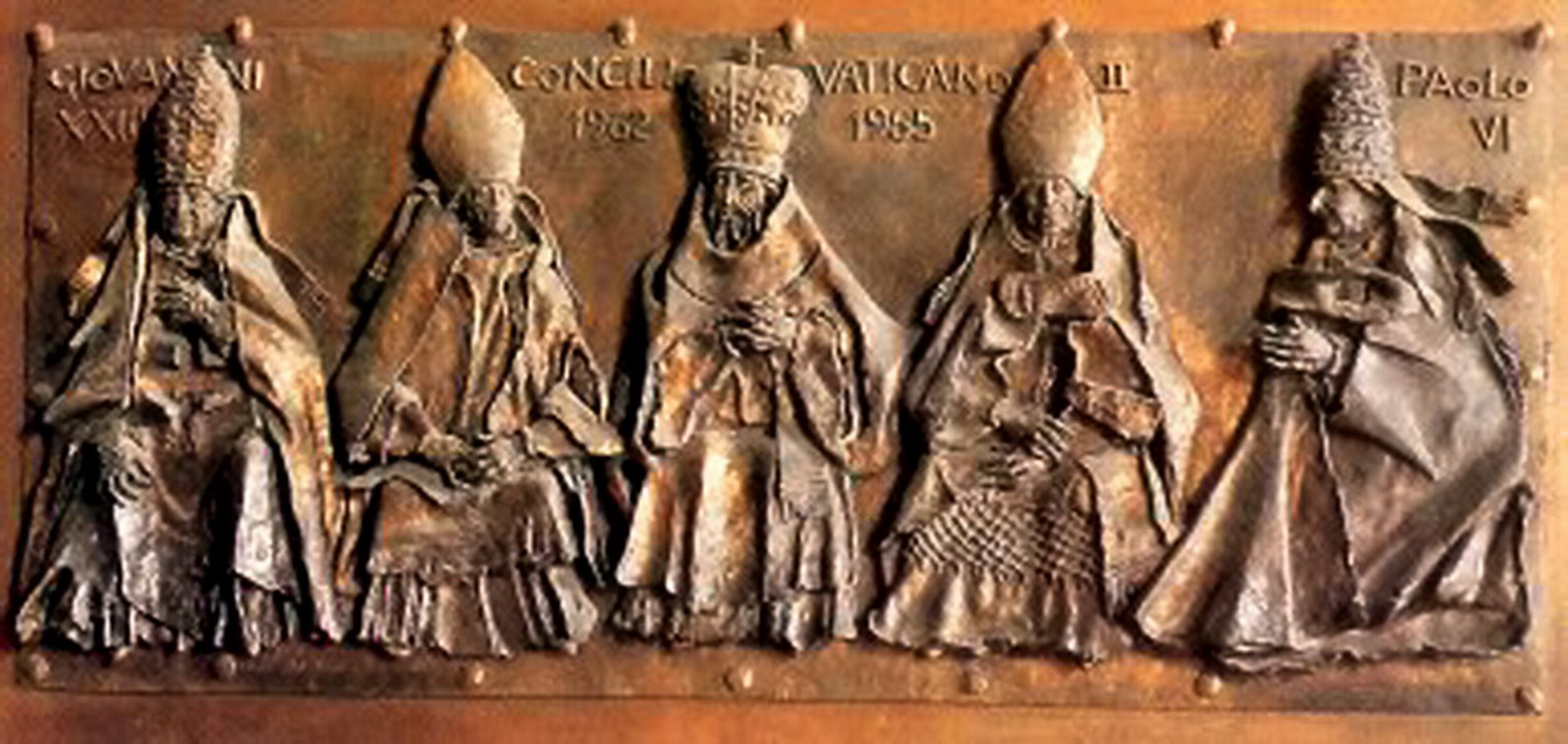
Catholic Ecumenical Councils:
451 - Council of Chalcedon: At Chalcedon, a city of Bithynia in Asia Minor, the first session the Council of Chalcedon begins (ends on November 1).
Wikipedia Photo: Catholic Ecumenical Councils include 21 councils over a period of 1700 years. (While definitions changed throughout history, in today's Roman Catholic understanding Ecumenical Councils are assemblies of Patriarchs, Cardinals, residing Bishops, Abbots, male heads of religious orders and other juridical persons, nominated by the Roman Pontiff.) They meet to discuss matters of faith and Church discipline.
October 8th, 1200
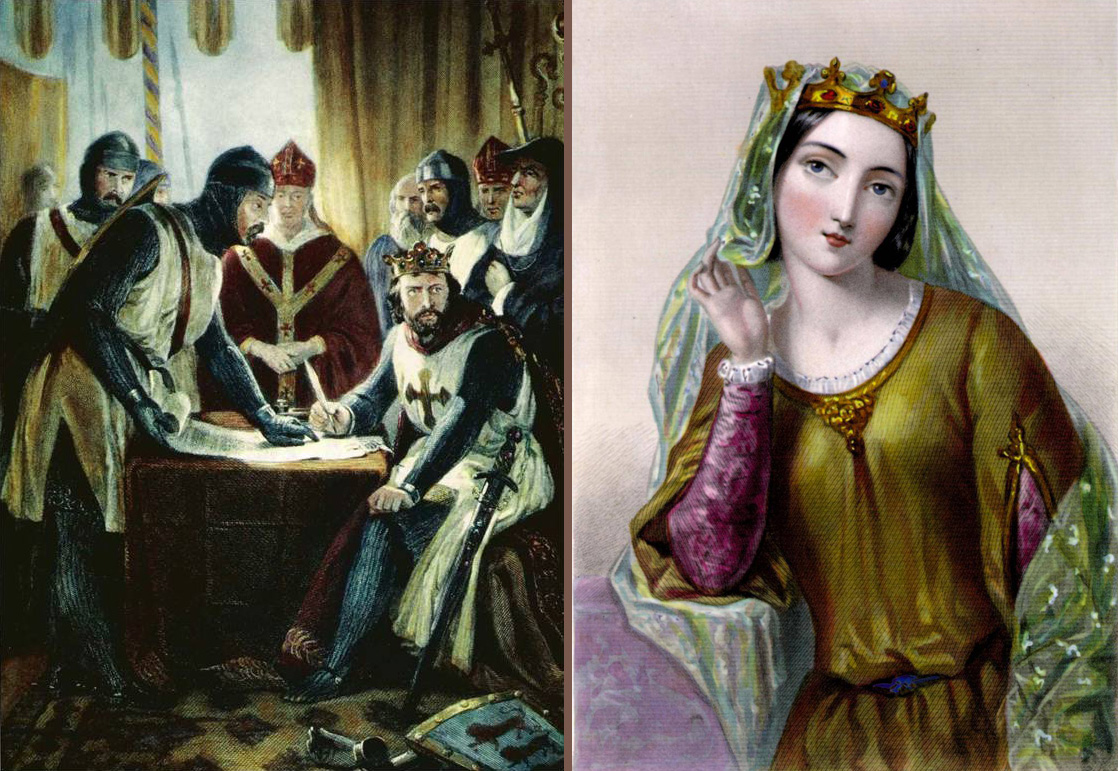
Isabella of Angouleme is crowned Queen consort of England.
Wikipedia Painting: King John being forced to sign the Magna Carta / Isabella of Angoulême, Queen Consort of John, King of England.
October 8th, 1322
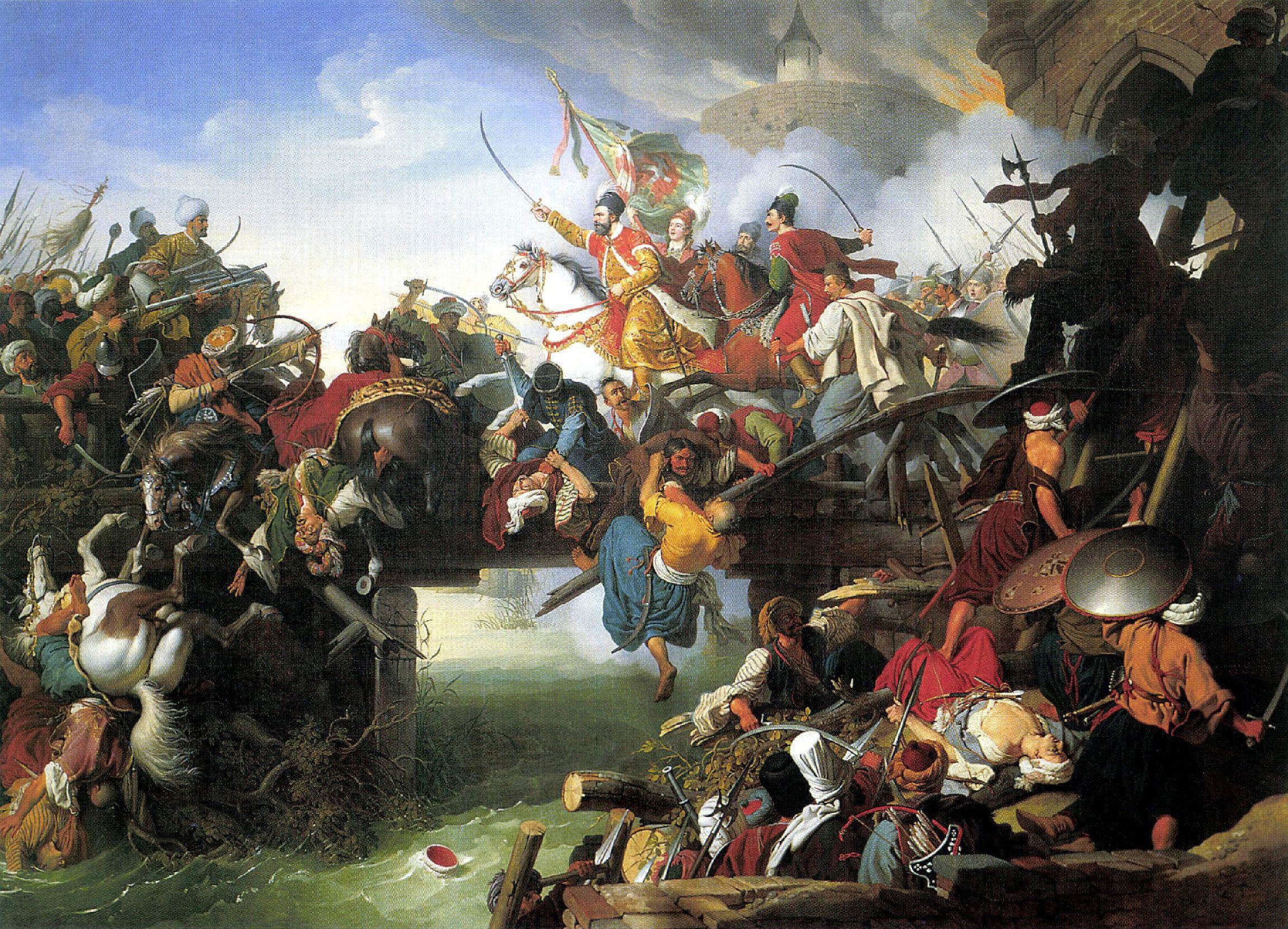
Battle of Bliska: Mladen II Šubić of Bribir is defeated and arrested by the Parliament.
Wikipedia Painting: Croatian ban Nikola Šubić Zrinski during Battle of Szigetvár.
October 8th, 1480

Great standing on the Ugra river: a standoff between the forces of Akhmat Khan, Khan of the Great Horde, and the Grand Duke Ivan III Russia, which results in the retreat of the Tataro-Mongols and the eventual disintegration of the Horde.
Wikipedia Image: Ivan III of Russia / Ivan III tearing the Khan's demand into pieces
October 8th, 1806

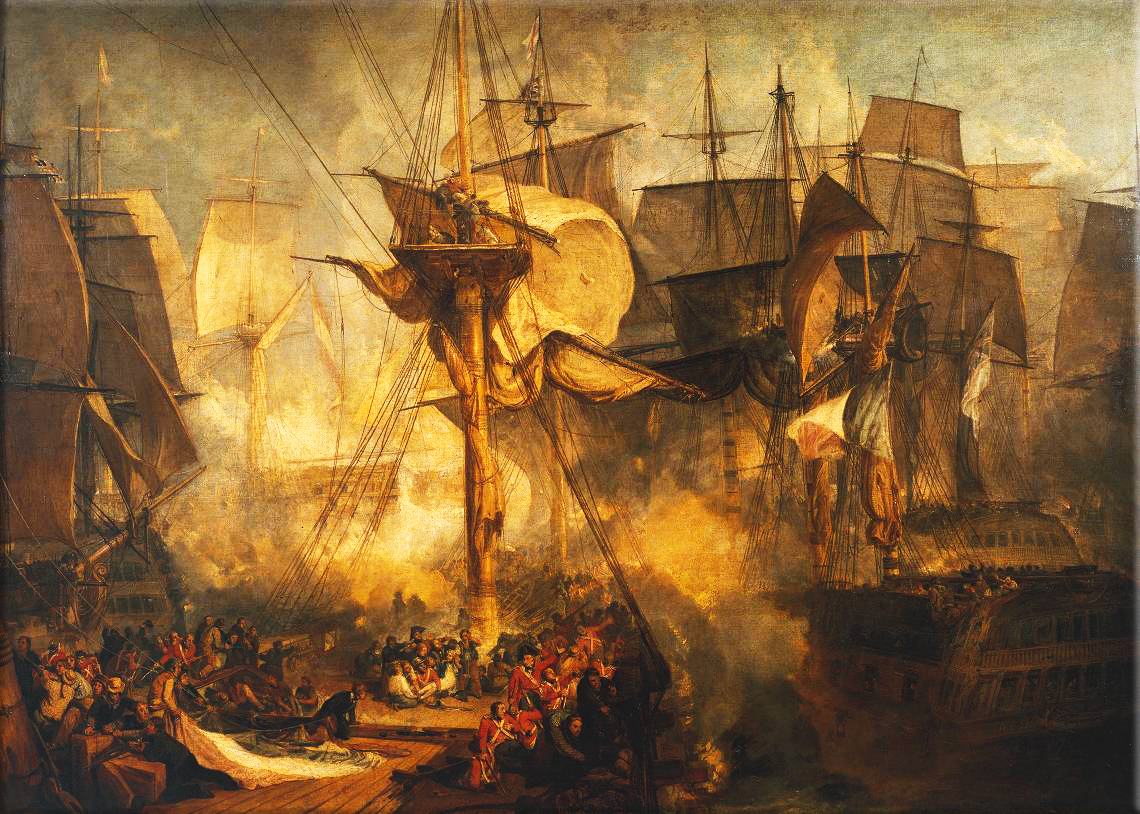
French Revolutionary Wars / Napoleonic Wars:
1806 - Forces of the British Empire lay siege to the port of Boulogne in France by using Congreve rockets, invented by Sir William Congreve.
Wikipedia Painting: Battle of Trafalgar: The British HMS Sandwich fires to the French flagship Bucentaure (completely dismasted) in the battle of Trafalgar;
Napoleon in Berlin (Meynier). After defeating Prussian forces at Jena, the French Army entered Berlin on 27 October 1806;
Battle of the Bridge of Arcole Napoleon Bonaparte leading his troops over the bridge of Arcole, by Horace Vernet;
Napoleon as King of Italy (Appiani);
Napoleon Crossing the Alps (David). In 1800 Bonaparte took the French Army across the Alps, eventually defeating the Austrians at Marengo;
Charge of the Russian Imperial Guard cavalry against French cuirassiers at the Battle of Friedland, 14 June 1807;
Battle of Borodino as depicted by Louis Lejeune. The battle was the largest and bloodiest single-day action of the Napoleonic Wars;
Napoleon's withdrawal from Russia, a painting by Adolph Northen;
Wellington at Waterloo by Robert Alexander Hillingford;
Napoleon is often represented in his green colonel uniform of the Chasseur à Cheval, with a large bicorne and a hand-in-waistcoat gesture.
Battle of Trafalgar; as seen from the mizzen starboard shrouds of the Victory by J. M. W. Turner (oil on canvas, 1806 to 1808).
October 8th, 1856
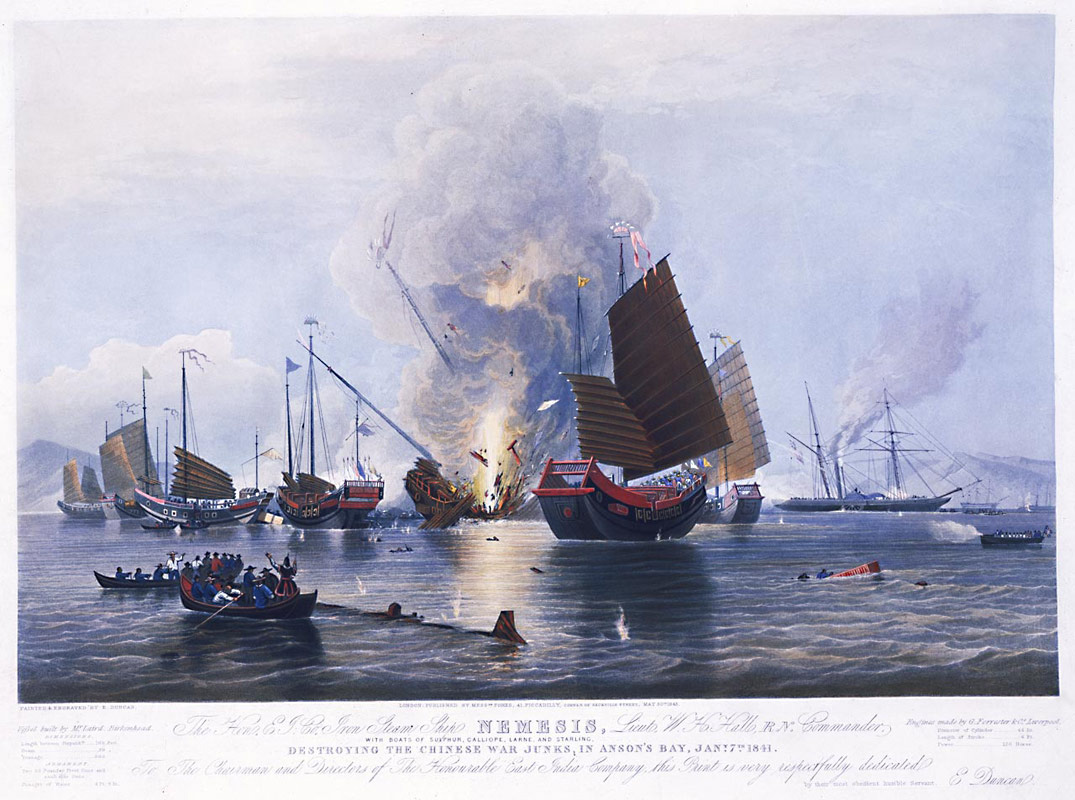
Second Opium Wars: Arrow Incident on the Pearl River; between several western powers and China begins.
Wikipedia Painting: First Opium War; The Nemesis destroying Chinese war junks during the Second Battle of Chuenpee, 7 January 1841.
October 8th, 1862
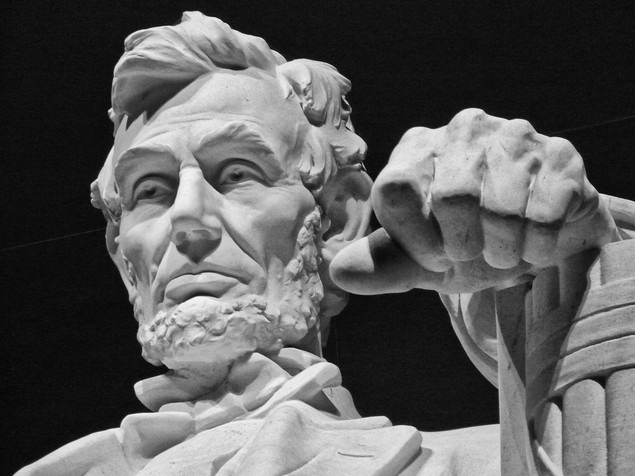
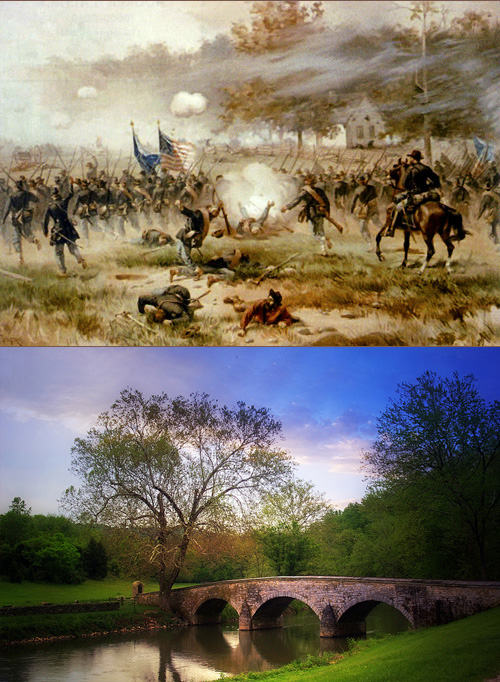
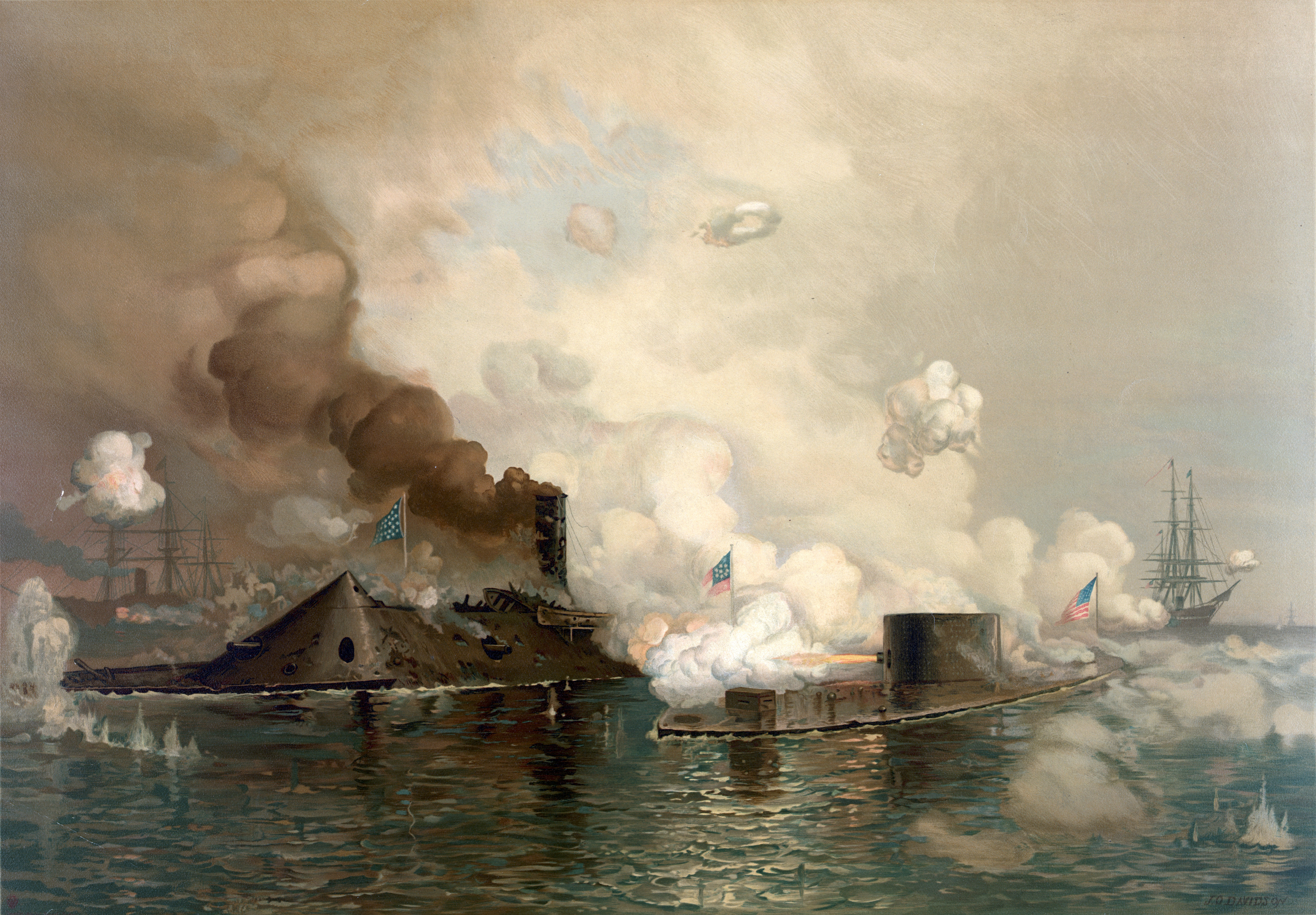
American Civil War:
1862 - Battle of Perryville; Union forces under General Don Carlos Buell halt the Confederate invasion of Kentucky by defeating troops led by General Braxton Bragg at Perryville, Kentucky.
Wikipedia Image: ● Lincoln Memorial; an American national monument built to honor the 16th President of the United States, Abraham Lincoln - located on the National Mall in Washington, D.C. across from the Washington Monument.
● The northern army led by George McClellan and the southern army led by Robert E. Lee met at Antietam Creek, Maryland in September, 1862. It was a bloody battle where 13,000 Confederates and 12,000 Union troops died in just one day. McClellan had hesitated to attack before the battle thus letting the southern troops regroup. Also, he had saved reserves and refused to use them at the end of the battle thinking that Lee was holding reserves for a counterattack, even though those reserves didn't exist. The Union victory stopped Lee's northward advance and was a turning point in the war.
● Battle of Antietam / Stone Bridge at Antietam Battlefield - Sharpsburg, Maryland
● First Battle Between Ironclads: CSS Virginia/Merrimac (left) vs. USS Monitor, in 1862 at the Battle of Hampton Roads.
● Although photography was still in its infancy, war correspondents produced thousands of images, bringing the harsh realities of the frontlines to those on the home front in a new and visceral way. The Atlantic.
October 8th, 1871

Four major fires break out on the shores of Lake Michigan in Chicago, Peshtigo, Wisconsin, Holland, Michigan, and Manistee, Michigan, including the Great Chicago Fire and the much deadlier Peshtigo Fire.
Wikipedia Lithograph: © Great Chicago Fire, credit Masterfile Corporation.
October 8th, 1918
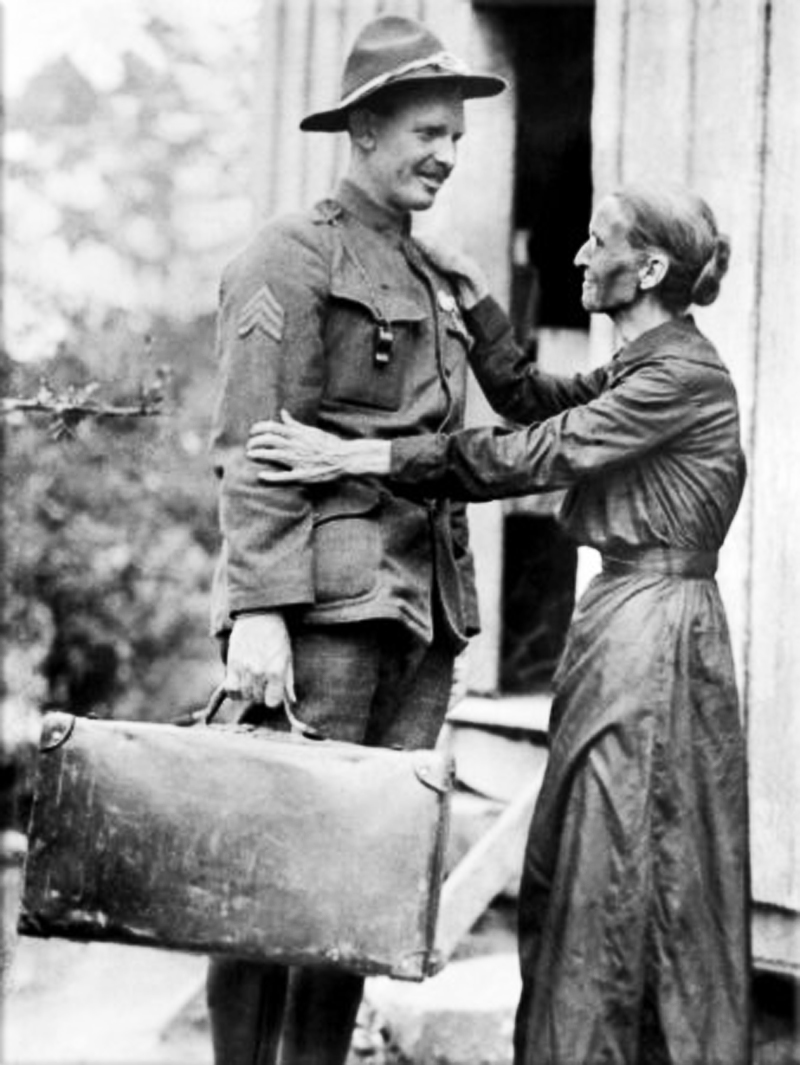
World War I: in the Argonne Forest in France, United States Corporal Alvin C. York kills 25 German soldiers and captures 132.
Wikipedia Photo: Tennessee's Sergeant Alvin York (1887 - 1964), of the Eighty-Second Division, one of the great American heroes of World War I. A four page article from "The Literary Digest" recounts his brave deeds as well as his glorious trip to New York City where he was luxuriated at the Waldorf Astoria and feted by the swells of Gotham. credit The Literary Digest, 1919, (Old Magazine Articles).
October 8th, 1939
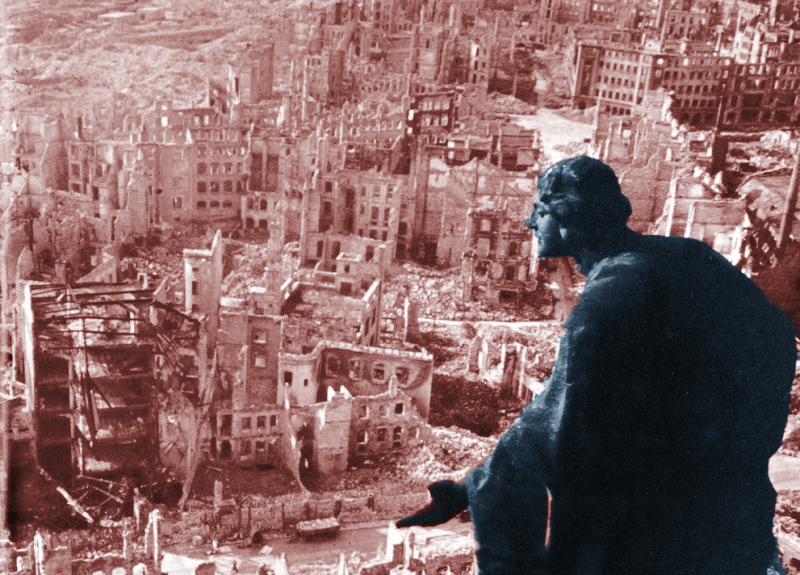

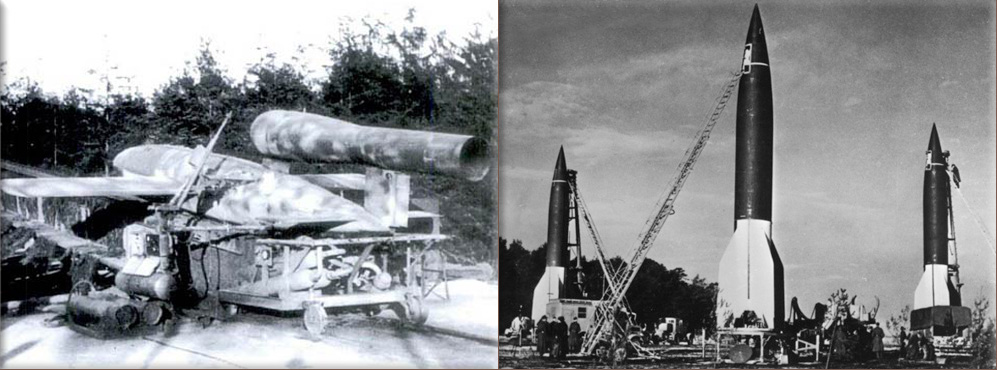
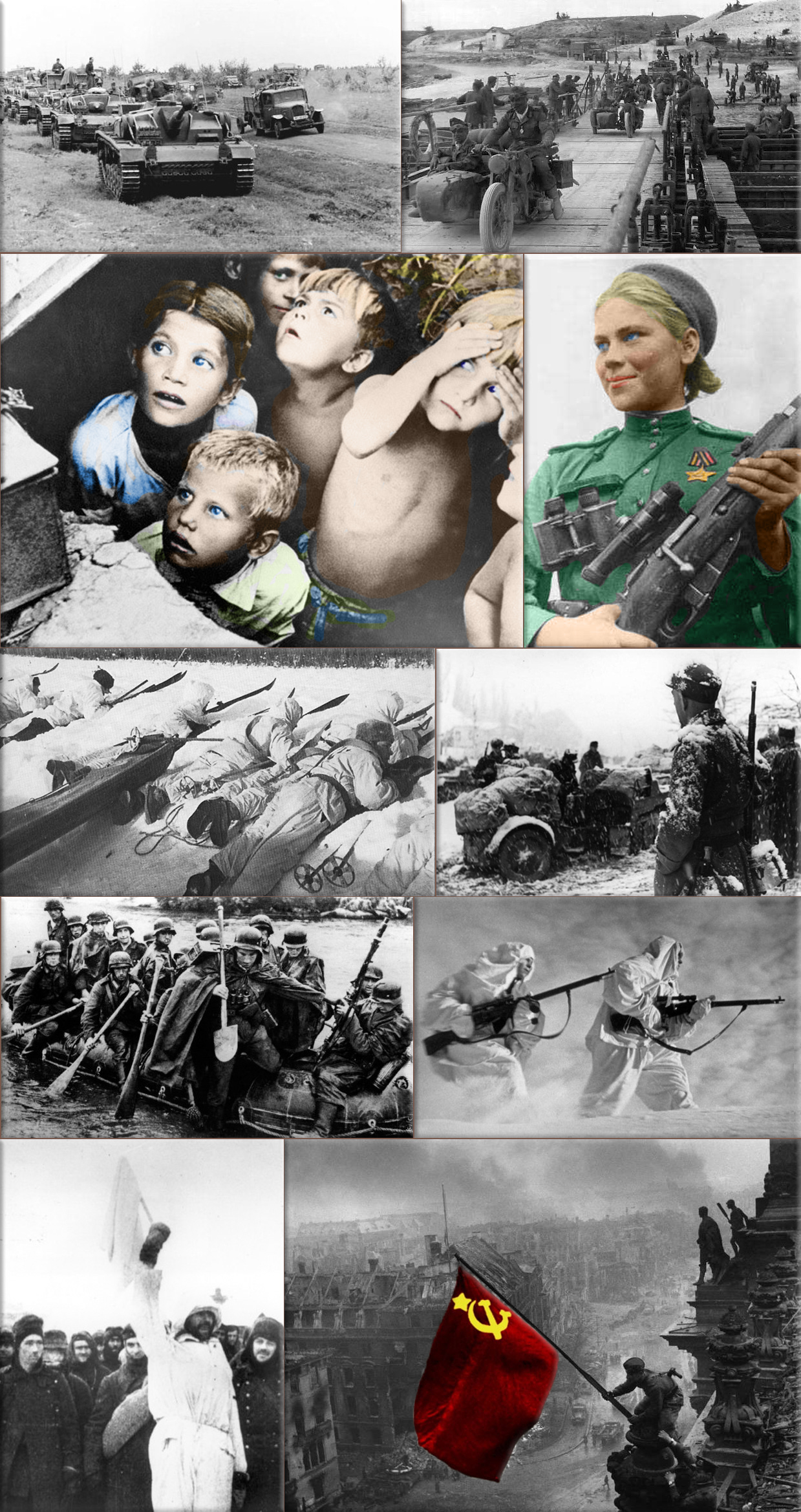
World War II:
1939 - Invasion of Poland; Germany annexes Western Poland.
1941 - German invasion of the Soviet Union reaches the Sea of Azov with the capture of Mariupol.
1944 - Battle of Crucifix Hill; occurs on Crucifix Hill just outside Aachen. Captain Bobbie Brown receives a Medal of Honor for his heroics in this battle.
Wikipedia Photo: Bombing of Dresden in World War II; August Schreitmüller's sculpture 'Goodness' surveys Dresden after a firestorm started by Allied bombers in 1945.
USS Bunker Hill was hit by kamikazes piloted by Ensign Kiyoshi Ogawa and another airman on 11 May 1945. 389 personnel were killed or missing from a crew of 2,600; Ensign Kiyoshi Ogawa, who flew his aircraft into the USS Bunker Hill during a Kamikaze mission on 11 May 1945; Kamikaze Missions - Lt Yoshinori Yamaguchi's Yokosuka D4Y3 (Type 33 Suisei) "Judy" in a suicide dive against USS Essex. The dive brakes are extended and the non-self-sealing port wing tank is trailing fuel vapor and/or smoke 25 November 1944.
German V1 flying-bomb and V2 Rockets - Preparations for a Salvo Launch of V-2 Rockets in the Heidelager near Blizna (Poland) (1944), credit German History in Documents and Images GHDI.
Eastern Front (World War II); Germans race towards Stalingrad. August 1942; Soviet children during a German air raid in the first days of the war, June 1941, by RIA Novosti archive; Soviet sniper Roza Shanina in 1944. About 400,000 Soviet women served in front-line duty units Caucasus Mountains, winter 1942/43; Finnish ski patrol: the invisible enemy of the Soviet Army with an unlimited supply of skis; Men of the German Engineers Corps cross a river which is swollen after the first autumn rains, to strengthen bridges linking the German positions on the central front in Russia. by Keystone / Getty Images. October 1942; Russian snipers fighting on the Leningrad front during a blizzard. Photo by Hulton Archive / Getty Images, 1943; German soldiers surrendering to the Russians in Stalingrad, the soldier holding the white flag of surrender is dressed in white so that there could be no doubt of his intentions, a Russian soldier is on the right of the photograph. by Keystone / Getty Images, January 1943.
October 8th, 1956
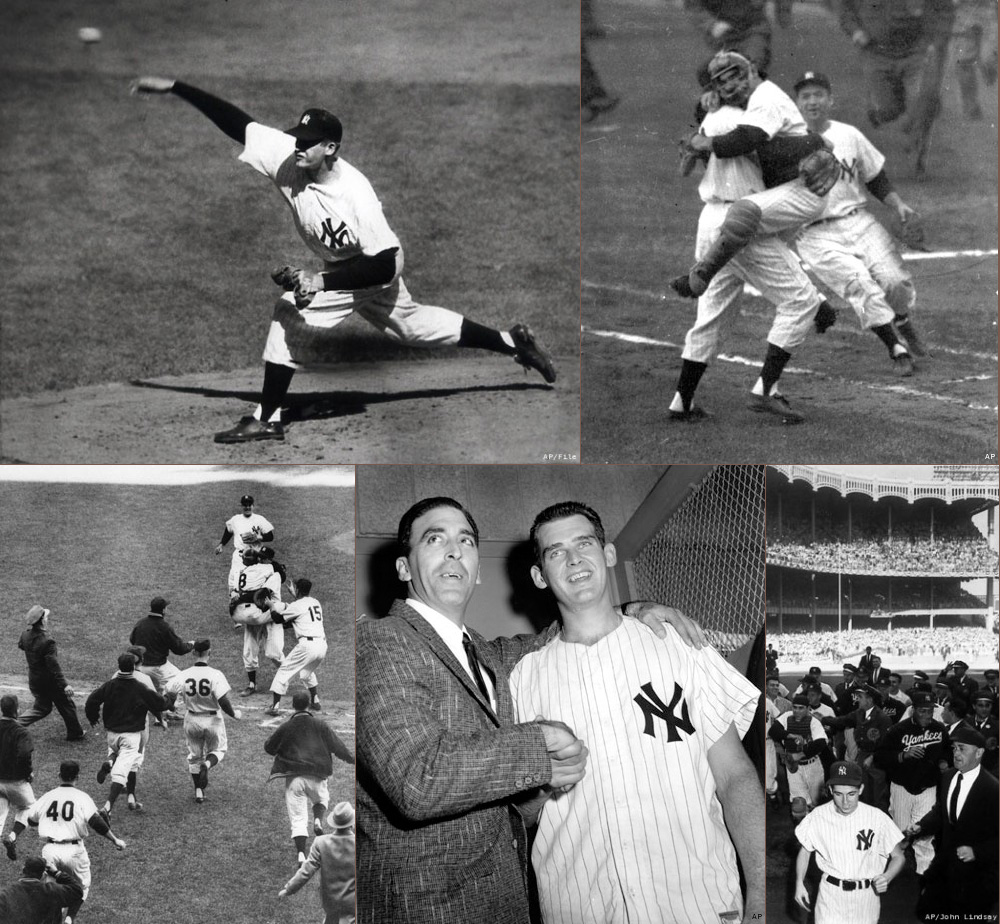
New York Yankees's Don Larsen pitched the only perfect game in a perfect game in a World Series.
Wikipedia The World Series: The Perfect Game credit KRQE, Associated Press.
October 8th, 1962

Spiegel scandal: Der Spiegel publishes the article "Bedingt abwehrbereit" ("Conditionally prepared for defense") about a NATO manoeuver called "Fallex 62", which uncovered the sorry state of the Bundeswehr (Germany's army) facing the communist threat from the east at the time. The magazine is soon accused of treason.
Wikipedia Image: Der Spiegel cover page.
October 8th, 1968
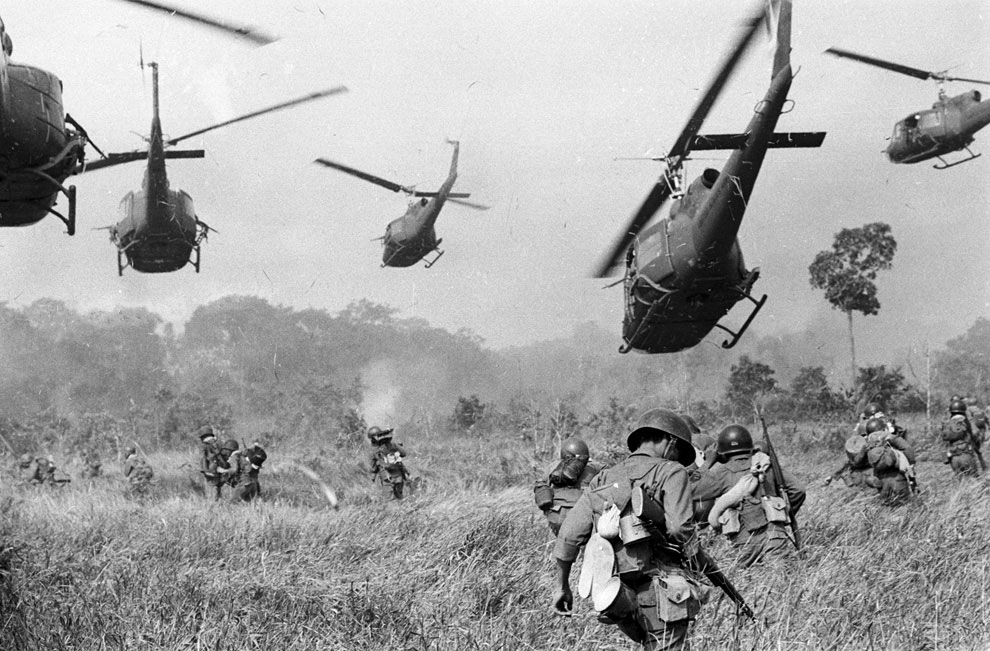
Vietnam War:
1968 - Operation Sealords; United States and South Vietnamese forces launch a new operation in the Mekong Delta.
1970 - In Paris a Communist delegation rejects U.S. President Richard Nixon's October 7 peace proposal as "a maneuver to deceive world opinion".
Wikipedia Photo: Vietnam War: Hovering U.S. Army helicopters pour machine gun fire into a tree line to cover the advance of South Vietnamese ground troops in an attack on a Viet Cong camp 18 miles north of Tay Ninh, northwest of Saigon near the Cambodian border, in Vietnam on March 1965. (AP Photo / Horst Faas) / Boston Globe
October 8th, 1973
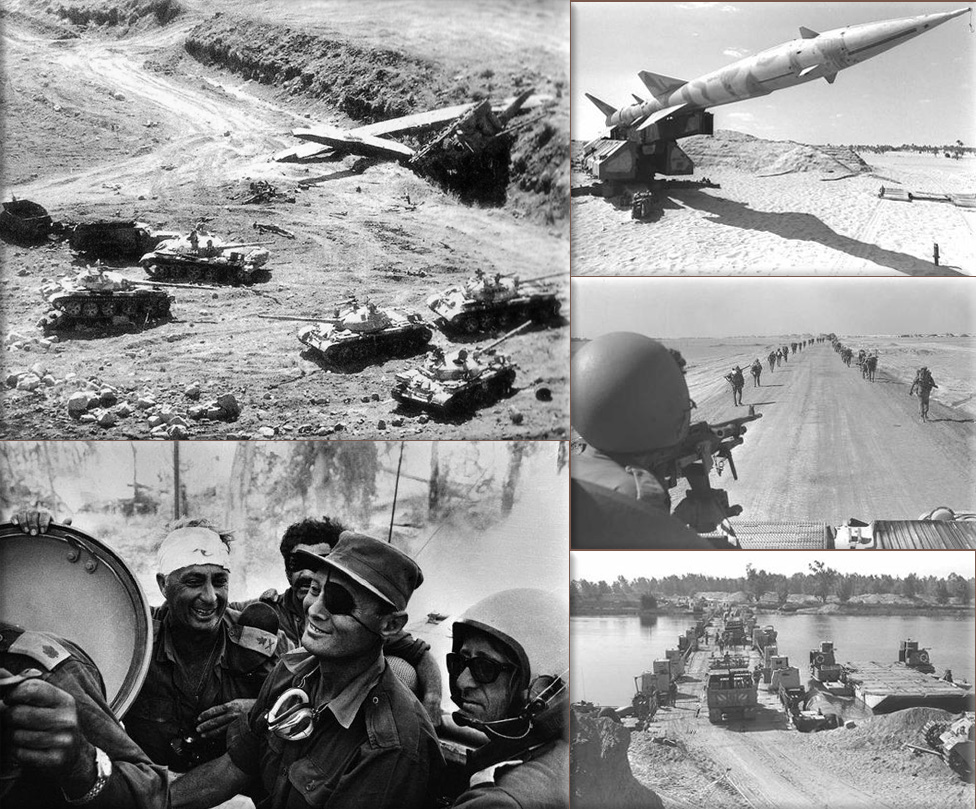
Suez Crisis:
1973 - Yom Kippur War; Gabi Amir's armored brigade attacks Egyptian occupied positions on the Israeli side of the Suez Canal, in hope of driving them away. The attack fails, and over 150 Israeli tanks are destroyed.
Wikipedia Photo: Yom Kippur War: credit Phobos.ramapo.edu.
October 8th, 1982

Poland bans Solidarity and all trade unions.
Wikipedia Photo: Solidarity stike in Poland.
October 8th, 1982

Cats opens on Broadway and runs for nearly 18 years before closing on September 10, 2000.
Wikipedia Image: Cats, the musical logo.
October 8th, 2001
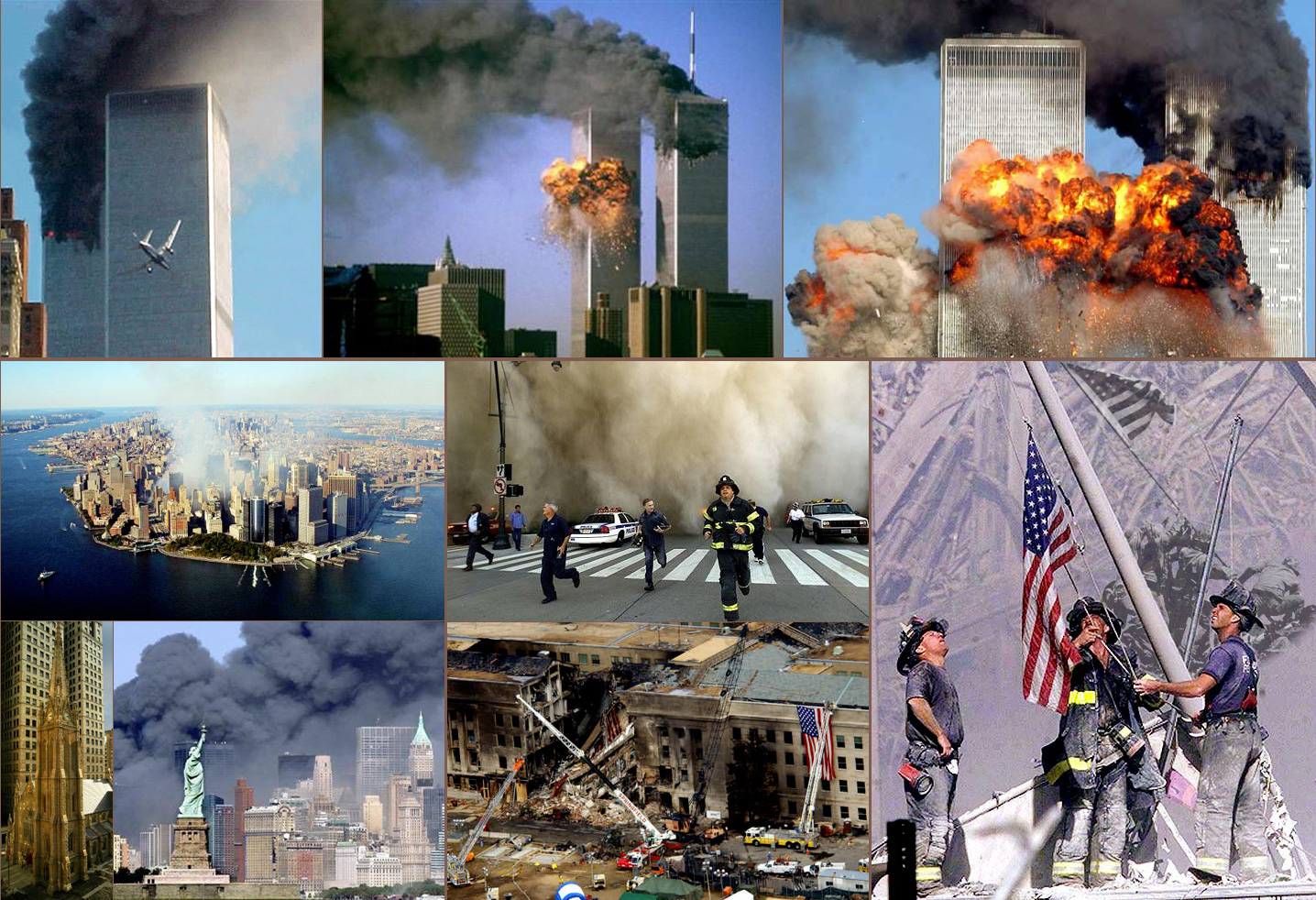
Aftermath of September 11 attacks: United States President George W. Bush announces the establishment of the Office of Homeland Security.
Wikipedia Photo: September 11 Attacks: From top to bottom: the World Trade Center burning; Trinity Cathedral; Statue of Liberty; a section of the Pentagon collapses; 9/11 memorial service.
October 8th, 2001

Aviation accidents and incidents:
2001 - Linate Airport disaster; A twin engine Cessna and Scandinavian Airlines System (SAS) jetliner collide in heavy fog during takeoff from Milan, Italy killing 118.
Wikipedia Photo: ● Pan AM 747 ● U.S. Airways flight 1549 also known as the "Miracle on the Hudson" navigates an exit ramp near Burlington, New Jersey, June 5, 2011 ● Passengers stand on the wings of a U.S. Airways plane as a ferry pulls up to it after it landed in the Hudson River in New York, Reuters ● US Airways plane crashes into New York Hudson River, Photo: AP
October 8th, 2005

Earthquake:
2005 - Kashmir earthquake; Thousands of people are killed by a magnitude 7.6 earthquake in parts of Pakistan, India and Afghanistan.
Wikipedia Image: Preliminary Determination of Epicenters / Aleppo Syria; Anchorage, Alaska - March 28, 1964 Prince William Sound USA earthquake and tsunami; 8.9 Mega Earthquake Strikes Japan; Tsunami Swirls Japan's Ibaraki Prefecture March 12 2011. credit NOAA / NGDC, NOAA National Geophysical Data Center, USGS, National Geographics.
October 8th, 2014

Ebola: The first person in the United States to be diagnosed with Ebola, dies.
Wikipedia Image: Ebola: The first person in the United States to be diagnosed with Ebola, dies.
